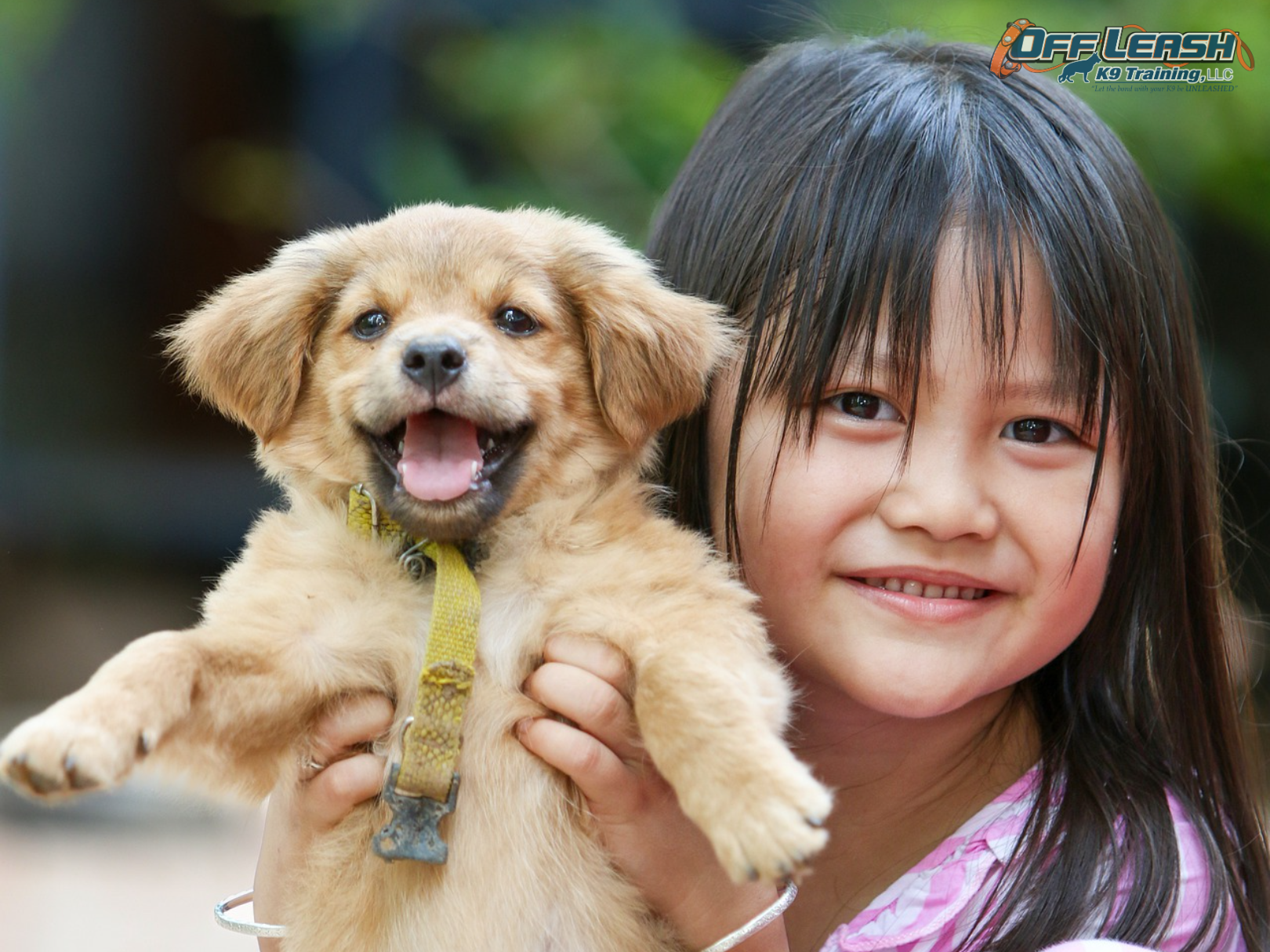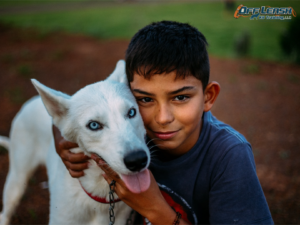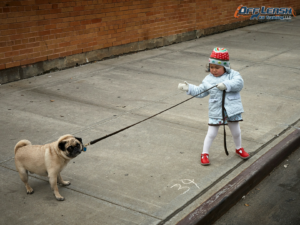Promoting Pawsitivity: The Key to Dog Safety Education for Kids
This article emphasizes the importance of dog safety education for children and highlights the positive impact it has on promoting responsible pet ownership and preventing dog-related incidents.
Introduction to Dog Safety Education for Children
Dog safety education is not merely a precaution; it’s an essential foundation for fostering harmonious relationships between children and dogs. By initiating this education early, we equip our young ones with the knowledge and skills necessary to prevent accidents and understand the responsibilities of pet ownership. Such education is critical in mitigating dog-related incidents, which often stem from misunderstandings or fear. When children are taught how to properly interact with dogs, it safeguards both parties and cultivates a nurturing environment where respect and care for animals flourish. The benefits of instilling dog safety education from a young age ripple outwards, creating a society where children grow up to be empathetic and informed pet owners. This understanding leads to safer, more positive interactions with dogs, reducing the likelihood of bites and fostering a lifelong bond between children and their furry friends.
 Understanding Dog Behavior
Understanding Dog Behavior
Dogs have a unique way of communicating their feelings and intentions, utilizing a variety of behaviors such as barking, tail wagging, and shifts in their body posture to express themselves. While many people interpret a wagging tail as a universal sign of a dog’s happiness, the truth is far more nuanced. A wagging tail can indeed indicate happiness, but it can also signify feelings of excitement, anxiety, or even serve as a warning of potential aggression. This complexity in canine communication underscores the importance of teaching children to recognize and understand these non-verbal cues for their safety and to foster positive interactions with dogs.
The Right Way to Approach Dogs
Educating children on the correct way to approach dogs is fundamental in preventing negative interactions that can lead to fear or aggression from either party. It’s important to teach children that dogs, much like humans, have personal boundaries that need to be respected. Approaching a dog directly from the front can be perceived as confrontational or threatening from the dog’s perspective. Instead, children should be taught to approach dogs from the side, which is a less intimidating angle for the animal. This technique helps to make the child appear less threatening and more friendly in the eyes of the dog.
Once near the dog, it’s crucial for children to know how to initiate contact in a manner that’s comfortable for the dog. Encouraging children to stand still for the dog to sniff allows the dog to get acquainted with their scent in a non-threatening way. This step is essential in establishing a calm, initial interaction between the child and the dog, ensuring the dog feels safe and is more likely to respond positively.
Preventing Dog Bites
Understanding the reasons behind dog bites is crucial in teaching children how to safely interact with dogs. Factors such as inadvertently provoking a dog during play, hastily approaching an unfamiliar dog, or misunderstanding a dog’s body language can significantly increase the risk of bites. For instance, a dog might perceive a quick approach as a threat, leading to a defensive reaction.
Furthermore, it is essential to teach children the significance of not disturbing dogs while they are eating or resting. These moments can be particularly sensitive for dogs, and interrupting them may trigger an instinctual defensive response. By instilling in children the habit of asking for permission before engaging with a dog, whether it’s for petting or playing, we can foster a safer environment for both parties.
Safety Tips for Children
Educating children on the proper ways to interact with dogs is a cornerstone of preventing dog bites and ensuring their safety. A key guideline is teaching children to always seek the dog owner’s permission before attempting to pet a dog. This step not only respects the dog’s boundaries but also gives the owner the opportunity to inform the child if their pet is comfortable with being touched. Another essential safety tip is instructing children to avoid making direct eye contact with unfamiliar dogs. Dogs can perceive direct eye contact as a sign of aggression or a challenge, which could provoke an unwanted response. Instead, children should be taught to approach dogs calmly and let the dog initiate contact, which can significantly reduce the risk of misunderstandings and potential aggression.
Educational Resources and Programs
Incorporating a variety of educational resources such as books, videos, and interactive games into dog safety education can significantly enhance the learning experience for children. These tools serve not only to reinforce the key concepts learned in formal education settings but also to engage children in an interactive and fun way, making the learning process both enjoyable and memorable for pet safety. For example, interactive games that simulate real-life scenarios can help children practice the right way to approach and interact with dogs, thereby solidifying their understanding and application of safe behaviors.
 Parental Involvement and Support
Parental Involvement and Support
Parents are the cornerstone of instilling lifelong habits in children, and when it comes to dog safety, their role cannot be overstated. By demonstrating respectful behavior towards animals, parents set a powerful example for their children to follow. This includes showing how to approach dogs gently, respecting their space, and understanding that not all dogs may welcome interaction. Such actions not only teach children how to interact with dogs safely but also instill a sense of empathy and responsibility towards animals.
Furthermore, fostering open communication between children and parents about their interactions and experiences with dogs is crucial. It creates an environment where children feel comfortable sharing their feelings and questions about dogs, whether it’s about a dog they met at the park or their understanding of a dog’s behavior. Parents can use these discussions as teachable moments to clarify misconceptions, share insights about dog body language, and discuss the importance of asking for permission before petting someone else’s dog.
Conclusion: Promoting Safe Interactions Between Children and Dogs
The journey to fostering safe and respectful interactions between children and dogs is a collective effort that hinges on thorough education and consistent practice. Instilling the principles of dog safety from an early age not only minimizes the risk of accidents but also enriches the bond between children and pets, paving the way for a future where empathy and understanding towards animals are ingrained values.
Creating a safe and rewarding environment for children and dogs to interact requires a commitment to education and understanding. By teaching children how to respect and understand dogs, parents can lay the foundation for lifelong friendships between their kids and their four-legged family members. It involves more than just occasional reminders; it encompasses consistent training, active supervision, and a deep understanding of the dog’s cues and behaviors. This not only helps in preventing accidents but also fosters an atmosphere of mutual respect and love. Off Leash K9 Training of Corpus Christi specializes in providing families with the tools and knowledge needed to achieve these harmonious relationships. Through their expertly designed programs, children learn the importance of gentle handling, recognizing a dog’s comfort signals, and the joy of engaging in activities that strengthen their bond with their dogs.


 Understanding Dog Behavior
Understanding Dog Behavior
 Parental Involvement and Support
Parental Involvement and Support




